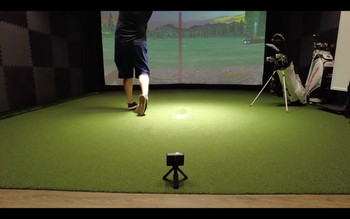TaylorMade has led the golf industry in driver production for years. They’re the most played driver on all the major tours. If you’re out playing in a foursome, it’s likely that there’s more than one TaylorMade driver in the group. And that’s with good reason, their stuff is some of the best out there.
The latest hype is the family of Sim2 drivers new for this year.
Key Features
Single-piece face cup is made from a single piece of titanium to ensure an optimized sweet spot for consistent strikes and performance off the face on every swing.
Carbon fiber sole is much lighter than titanium resulting in faster clubhead speed and added distance, even on mishits.
Split Mass Weighting positions weight strategically both at the front and the back of the head for increased stability through impact.
TaylorMade Sim2, Max, and Max D Driver
The TaylorMade SIM2 drivers redefine performance with cutting-edge technology, unmatched forgiveness, and premium aesthetics worth every penny.
Design and Technology
Again, the design features and technological concepts haven’t really changed that much from the Sim series of drivers to those in the Sim2 family.
What has changed is the materials used in construction. In more than one area of the driver head, TaylorMade has incorporated lighter, more durable materials to make each club more aerodynamic for faster swing and ball speed. Not to mention increased forgiveness and distance.

TaylorMade Sim2 Driver
If there’s one feature that stands out more than any other in the Sim2 driver, it’s the forged aluminum ring that encompasses the crown and back of the driver. By using aluminum in these portions of the club, weight is reduced and moved to other areas of the club where it can be used more efficiently.
This driver is also the lowest spinning of the three. While that’s great for high launch conditions and increased distance, early testing shows that some forgiveness may have been sacrificed in the pursuit of low spin.
TaylorMade Sim2 Max Driver
Compared to the Sim2, the Sim2 Max driver is more forgiving and spins a little more. A 24-gram tungsten weight is situated at the back of the head to increase MOI, and therefore forgiveness.
Another design feature that makes this driver more forgiving is a face that’s five percent larger than the Sim2.
TaylorMade Sim2 Max D Driver
If you’re a chronic slicer (there’s more than one of you reading this article), the Sim2 Max D driver is made for you.
With an even larger face and more MOI than the Sim2 Max, this is by far the most forgiving driver in the Sim2 line.
The back weight in the Sim2 Max D has been moved toward the heel. This enables players to square the club at impact and greatly reduce left-to-right spin.
Our Experience
I think I’ve hit just about every TaylorMade driver that’s been introduced for the past decade. While I’ve liked some better than others over the years, I can say that the Sim2 and Sim2 Max have blown my mind (the Sim2 Max D is not made for my swing).
Even though there are a lot of similarities to the original Sim drivers, the different construction materials and design modifications make all the difference in the Sim2 and Sim2 Max D.
I noticed that both the Sim2 and Sim2 Max spun a little less off the face and as a result the flight was a little lower than my current driver. However, the solid feeling and stability at impact gave me a lot of confidence.
Like most TaylorMade products, my final verdict is that you can’t go wrong with any of the Sim2 drivers.
TaylorMade Sim2, Max, and Max D Driver
The TaylorMade SIM2 drivers redefine performance with cutting-edge technology, unmatched forgiveness, and premium aesthetics worth every penny.
Is the TaylorMade Sim2, Max, and Max D Driver Worth It?
Absolutely, while the TaylorMade Sim2, Max, and Max D Driver is a great product, there are a few pros and cons that you need to be aware of:
Pros:
-
Exceptional Forgiveness: All three drivers offer impressive forgiveness, especially the Max D, which is ideal for players struggling with slices.
-
High Launch: The drivers produce high ball flights, maximizing distance and accuracy.
- Modern Design: The sleek aesthetics and advanced materials enhance both performance and visual appeal.
Cons:
-
Price Point: These drivers are more expensive compared to competitors.
-
Limited Workability: The draw bias in the Max D sacrifices shot-shaping flexibility.
-
Feel Trade-Off: The oversized face of the Max D slightly diminishes feedback.
Frequently Asked Questions
What are the key differences between the SIM2, SIM2 Max, and SIM2 Max D drivers?
How does the Forged Ring Construction in the SIM2 Max driver enhance performance?
What are the benefits of the Inertia Generator and TPS Front Weight in the SIM2 Max driver?
How does the Twist Face technology in the SIM2 Max driver improve ball speed and accuracy?
What kind of forgiveness can I expect from the SIM2 Max driver?
Conclusion
TaylorMade knows what they’re doing when it comes to the driver game. They have for years and that’s witnessed by their widespread popularity.
Even though the Sim2 series of drivers are similar to the original Sim family in many respects, the use of different materials in construction has improved the performance of all three clubs this year.
If you’re looking for an upgrade to your current driver, you’d be missing out if you didn’t at least take a Sim2 driver for a test drive.






